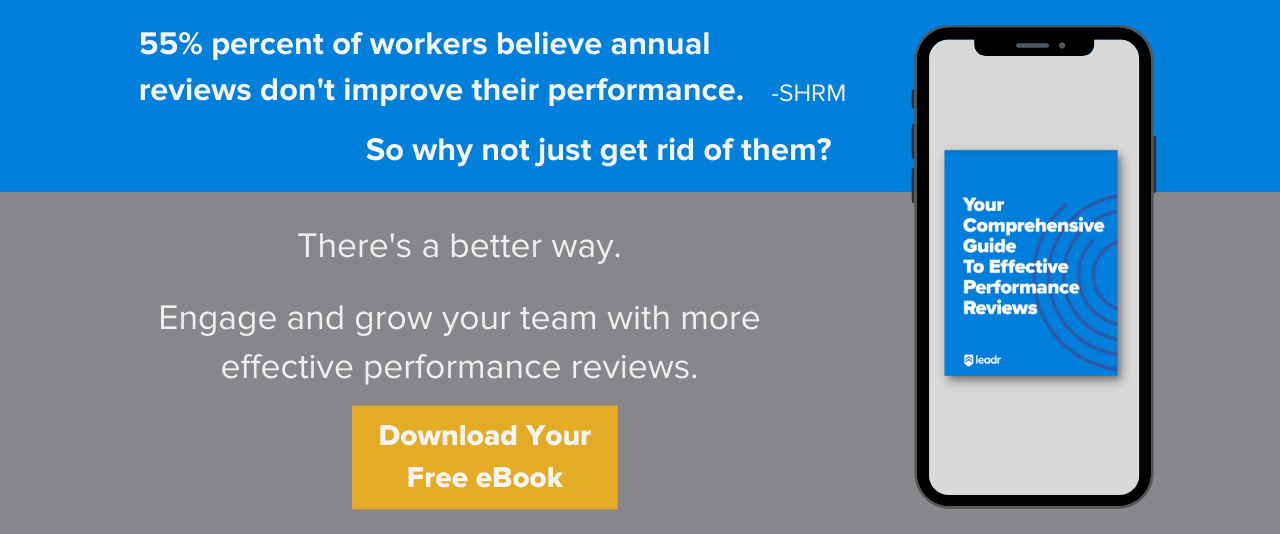Three Steps to Greater Clarity and Transparency In Your Work
The old adage goes, “honesty is the best policy.” But when it comes to your team, as a manager and a leader, you might be thinking “what they don’t know, won’t hurt them,” too. These two thoughts present a conundrum for leaders: how much do we share with our team members? And is there a point where being transparent does more harm than good?
Transparency often gets a bad rap, because leaders worry that if employees really knew everything that was going on behind the scenes, there’s no way they could focus on their job, trust their boss, stay positive and or even be motivated for their future at the organization.
But the truth is, transparent cultures lead to great benefits in the workplace, including:
- Long-term success - 86% of top middle-market company CEOs see a strong connection between transparency and long-term success
- Employee happiness - Management transparency is the #1 factor contributing to employee happiness
- Increased rapport - When employees feel out of the loop, rapport drops with their team. One study measured this decline as high as a 58% drop in perceived group standing.
- Focus and creativity - Transparent leadership boosts employees’ ability to focus and work creatively according to a 2017 study published in The Journal of Leadership and Organizational Studies
Building a culture of transparency can come with challenges for your team. But it’s worth the work required for your team to see how they fit into the big picture in their role, know their manager is rooting for them to grow and thrive in the organization, and the motivation and increased quality that comes from a team that trusts each other and provides regular, thoughtful feedback in a two-way model that fosters self-awareness and growth in the big and small areas.
Here are a few obstacles you might find as you increase transparency.
But these three areas - with thoughtful and intentional reflection and work - can increase clarity and transparency on your team:
- Increased transparency comes with risks. Employees will now have access to enough information to do incredible harm or good. While they could use it against you, it more likely will nurture a safe space for employees to speak up and share feedback that leads to less cultural dysfunction. Think through what these risks might be and weigh them with the potential good transparency could bring.
- Figuring out the “default” - We’re not suggesting that everything that happens be open knowledge to your team - and while working in a “glass office” helps build a sense of an open-door policy, there may be times that you, as a leader, have to figure out how much and when to share something. Moving away from a “need to know” mindset opens your team up to greater trust. There will always be a time that is appropriate for privacy, but an attitude of openness builds a culture where it is ok and expected that sometimes you have to have hard conversations because they lead to growth that is ultimately good for everyone - even if the outcome in the moment leads to temporary pain or even turnover. If you do experience turnover, remember that they probably were not a good fit for the organization long-term anyway.
- Defining the “why” behind the “what” - your values, mission, and vision are the heart behind what you do. Consistency is key, whether internal or external. Your customers and clients will see hints of the culture in your interactions and work, which can also have positive and negative consequences. But your team will know it best. Either way, defining what this is and putting it at the forefront of your focus is a vital - but challenging - step.
The end result?
- Reduced silos and Increased collaboration
- Better engagement
- Increased responsibility and ownership
- Empowered decision making
- Stabilization of emotional uncertainty - your team can hear bad news or negative feedback and use it as a tool for reflection and change of action.
The bottom line is, all of these results are life-giving for your team: longevity, contentment, consistent quality output grow because the input works. When you regularly meet with your team, you’ll be able to track the growth and flourishing as they progress in their role and add to the overall success of the organization. As a leader, there is nothing more rewarding than seeing the fruit of hard work over time.
Ready to get started and see how Leadr can optimize this process? Request a demo here.
Share this
You May Also Like
These Related Stories

Nail the First Impression - Why Mission and Vision Matter in Your Onboarding Process

Empathy: The Number One Skill For Leaders







No Comments Yet
Let us know what you think